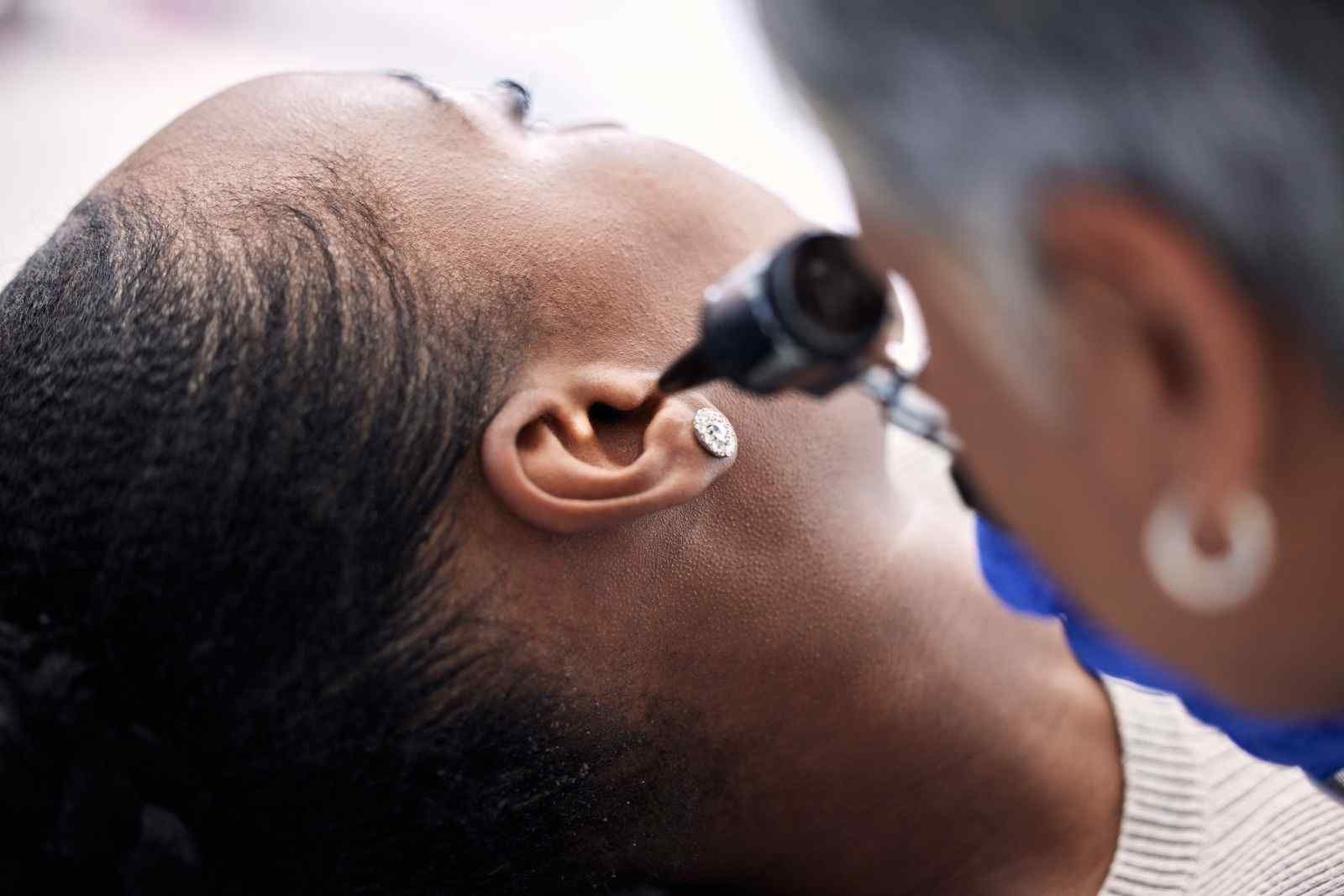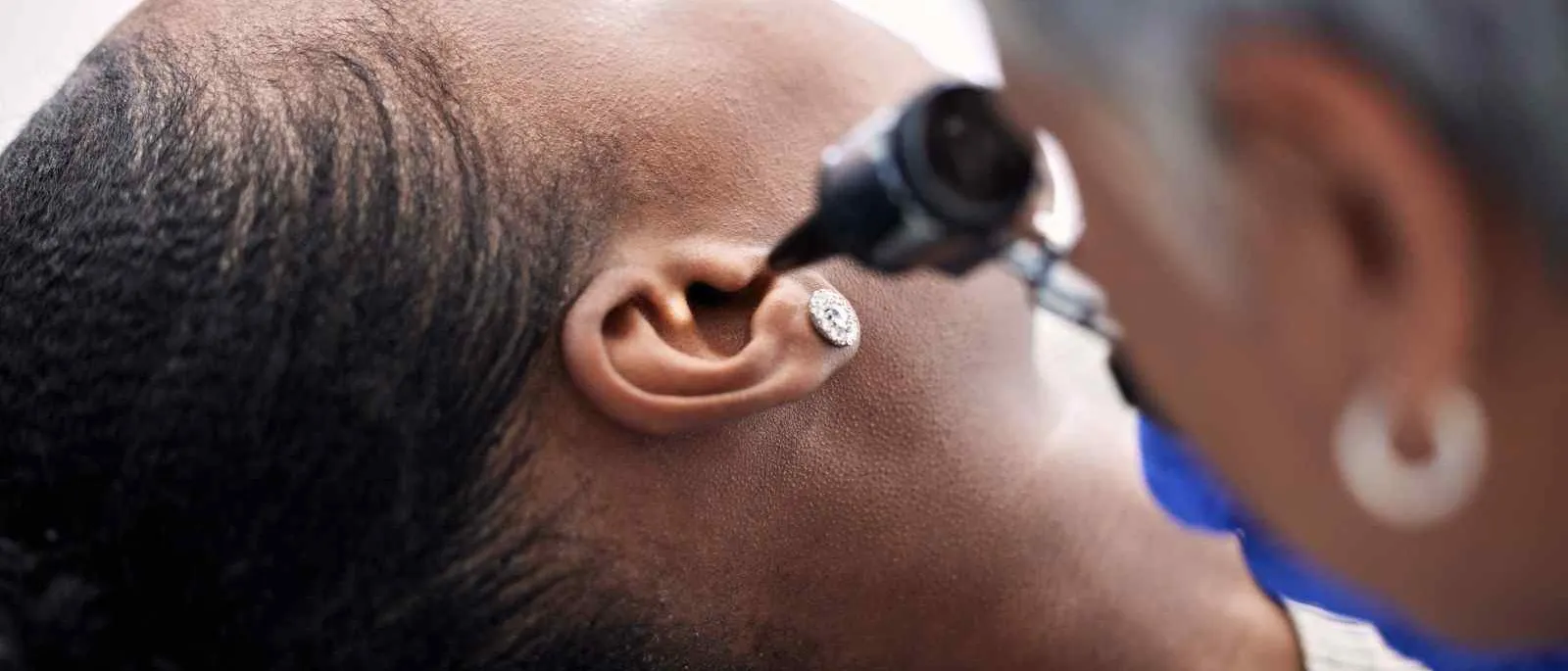Anyone can experience ear pressure from time to time. However, it's important to understand how to relieve pressure in ears correctly. After all, you don't want to worsen the problem by doing something that could damage your inner ear.
Whether your ear pressure comes and goes or you get ear pressure regularly, try the following techniques to alleviate your discomfort and get relief. That way, you can avoid ear pressure and the side effects that sometimes accompany it, like vertigo.

1. Try ear drops.
Over-the-counter and prescription ear drops can address ear pressure associated with wax buildup within the ear. Never use a cotton-tipped swab to "clean" your ear. You'll force the wax deeper, potentially harming your eardrum or the inside of your ear.
Be sure to use the ear drops as instructed. Be patient: You may have to perform the routine multiple times to see results.
2. Use a warm compress.
Holding something warm — not hot — against your ear can sometimes cause ear pressure to lessen. For instance, you might want to run warm water on a hand towel and then squeeze out the water. You can press the warm, moist towel to your ear.
3. Make your ears "pop" open.
Did you know that you can "pop" your ears by opening your mouth wide or chewing on a stick of gum? Or by forcing yourself to yawn? This quick technique works well if your ears are blocked because of a change in altitude, such as when driving up the side of a hill. Just be sure to give this a little time. Ears don't necessarily "pop" right away.
4. Get treated for your cold.
It is important to know how to unclog ears when sick. First, though, you need to address your cold. This could mean taking a decongestant or visiting your doctor. Getting the cold under control should help you feel less pressure in your ears.
5. Take a shower.
For some people, the steam and humidity from a hot shower can help them feel less pressure in their ears. As they inhale the mist, they begin to feel better. Just be sure the water isn't too hot for your sensitive skin.
6. Massage under and around your ear.
Giving yourself a mini "ear massage" under the affected ear can deliver fast comfort. Simply use your fingertips to massage the skin beneath and behind your ear gently. Ensure you only massage the outside of your ear, not the inside.
7. See a doctor for ear irrigation.
Ear irrigation involves constantly introducing warm water into the ear to break up wax. This treatment is simple and effective for people experiencing pressure because of excessive waxy buildup.
8. Move your head from side to side.
Occasionally, moving your head slowly from side to side and up and down can release any fluid causing ear pressure. This technique is worth trying because it can be done anywhere and can be used in combination with other options.
9. Blow your nose.
Do you have a cold and ear pressure combined? Or an allergic reaction with a stuffy nose and ear pressure? Blowing your nose may temporarily help keep your ear pressure minimal. However, your ear pressure may return until your cold or allergy symptoms disappear.
10. Visit a doctor.
Contact a doctor when all else fails and you keep dealing with ear pressure. A doctor who is well-versed in treating ear, nose, and throat problems will understand both what causes pressure in ears as well as how to treat that pressure. You may be asked to undergo a hearing test at your appointment to rule out more serious underlying issues. With the assistance of your doctor, you should be able to figure out why you're having ear pressure and how to stop it.
Are you ready to make ear pressure a problem of the past? Make time to meet with one of our doctors at ENT of Georgia South. We're focused on treating you as a whole person and ensuring you receive personalized, compassionate care.

